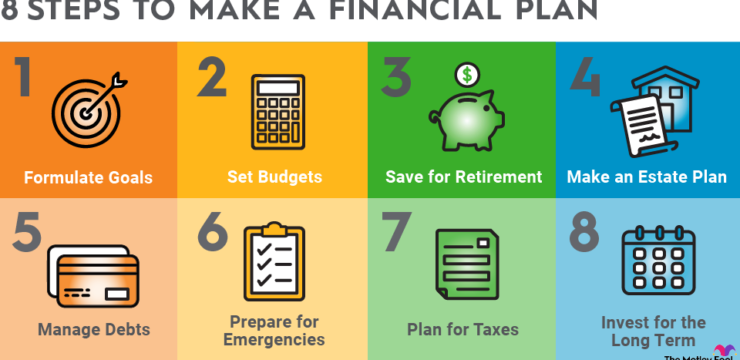Health coverage is one of the most important ways to protect yourself and your family. Medical care can be expensive, and without a plan, even routine visits or prescriptions can add up quickly. Having coverage ensures that you can access preventive care, see doctors when you need to, and feel more secure about unexpected medical situations. Yet for many people, the biggest challenge is affordability. Finding health coverage that balances cost with quality can feel overwhelming, but with the right knowledge and a few practical strategies, it is possible to make smart, budget-friendly choices.
This article explores beginner-friendly tips for finding affordable health coverage. Whether you are an individual, a student, a parent, or someone approaching retirement, these strategies can help you navigate your options, understand what to look for, and make decisions that fit both your health needs and your budget.
Understanding Why Health Coverage Matters
Before diving into affordability, it is important to recognize why coverage is essential. Health coverage allows people to get preventive services such as checkups, vaccinations, and screenings. It helps cover the costs of doctor visits, hospital stays, prescriptions, and even emergencies. Without a plan, a single medical bill can cause financial stress. Coverage is not just about money; it also provides peace of mind. Knowing that you can see a doctor when you are sick without worrying about large bills encourages people to take care of their health sooner rather than later.
Tip 1: Know Your Health Needs First
The first step in finding affordable health coverage is understanding what you really need. Some people require frequent doctor visits, while others mainly need coverage for emergencies. For example, if you take prescription medication regularly, you may want to focus on plans that provide good drug coverage. If you are generally healthy and only need preventive care, you may prefer a plan with lower monthly payments but higher costs if you do visit the doctor. Write down your current health needs, medications, and expected doctor visits for the year. This list will help you compare plans more effectively.
Tip 2: Compare Multiple Plans
Do not settle for the first option you see. Affordable coverage is often about comparing and contrasting different plans. Look at several providers and evaluate them side by side. Focus on these key factors: monthly premiums, deductibles, co-payments, prescription coverage, and provider networks. Sometimes a plan with a slightly higher premium may actually save you money in the long run if it offers lower co-pays or better coverage for the services you use most often.
Tip 3: Check If You Qualify for Assistance
Depending on your income level and situation, you may qualify for financial assistance. Government programs, subsidies, or employer support can significantly reduce the cost of coverage. Families, students, and seniors often have special options available. It is worth checking whether you qualify for help before assuming health coverage is out of reach. Even partial assistance can lower monthly costs and make plans more manageable.
Tip 4: Explore Employer-Sponsored Plans
If you are employed, check whether your workplace offers health coverage. Many employers provide group plans that are more affordable than buying coverage on your own. Sometimes companies even pay part of the monthly premium, reducing your out-of-pocket expenses. Employer-sponsored plans also tend to have larger provider networks and additional benefits such as dental or vision. If you are unsure, contact your HR department and ask what options are available.
Tip 5: Consider High-Deductible Plans With Care
Some people choose high-deductible health plans because they come with lower monthly premiums. These can be a good option if you are generally healthy and rarely visit the doctor. However, it is important to have some savings set aside in case of an unexpected emergency. For people who want affordable monthly costs but are comfortable taking on more responsibility for big expenses, this option can be practical. Beginners should weigh the risk carefully and ensure it fits their comfort level.
Tip 6: Look Into Community Resources
Many communities offer health coverage resources that people do not always know about. Local nonprofits, health centers, or state-based programs often provide affordable options or guidance on navigating the system. Community clinics sometimes offer sliding-scale fees, meaning the cost is based on your income. While these are not always full insurance plans, they can help fill the gap for people who need care while looking for coverage.
Tip 7: Understand Provider Networks
When choosing health coverage, always check the provider network. Some plans only cover certain doctors or hospitals. If you already have a doctor you trust, make sure they are included in the plan’s network. Going out-of-network often means paying much higher costs. Choosing a plan with a strong local network ensures you get affordable care when you need it.
Tip 8: Balance Premiums and Out-of-Pocket Costs
One of the most common mistakes people make is focusing only on the monthly premium. While a low monthly payment looks attractive, it may come with high deductibles or co-pays. That means every time you see a doctor, you pay more. On the other hand, a higher premium may cover more services upfront. To find affordable coverage, calculate the total expected yearly cost, not just the monthly premium. This approach gives you a clearer picture of affordability.
Tip 9: Take Advantage of Preventive Care
Affordable coverage is not just about the plan itself but also about how you use it. Many plans include preventive services at little or no cost. Annual checkups, screenings, and vaccinations can help detect issues early and save money in the long run. Taking advantage of preventive care means fewer expensive treatments later.
Tip 10: Reevaluate Every Year
Health needs change, and so do coverage options. A plan that worked for you last year may not be the best fit this year. Dedicate some time each year to review your health needs and compare available plans again. This habit helps you avoid overpaying and ensures you always have coverage that matches your budget.
Additional Tips for Specific Groups
Students often have access to affordable coverage through their universities. Parents may find family plans that include children’s care at lower group rates. Seniors usually have specialized programs to meet their needs. Freelancers or self-employed individuals should research group coverage through professional associations. Each group has unique options, and exploring them can lead to significant savings.
Healthy Lifestyle Choices and Coverage Savings
Another way to keep health costs affordable is by maintaining a healthy lifestyle. Exercising regularly, eating a balanced diet, and avoiding risky behaviors reduce the need for expensive medical care. Some providers even reward healthy habits with discounts or incentives. While lifestyle alone cannot replace coverage, it can certainly make it more affordable in the long run.
The Role of Technology in Finding Affordable Plans
Technology has made it easier than ever to search and compare health coverage. Online tools, apps, and comparison websites allow you to see different options side by side. You can filter by premium, coverage level, or network providers. These tools save time and often highlight hidden savings. For beginners, using online resources is a smart way to explore without pressure.






